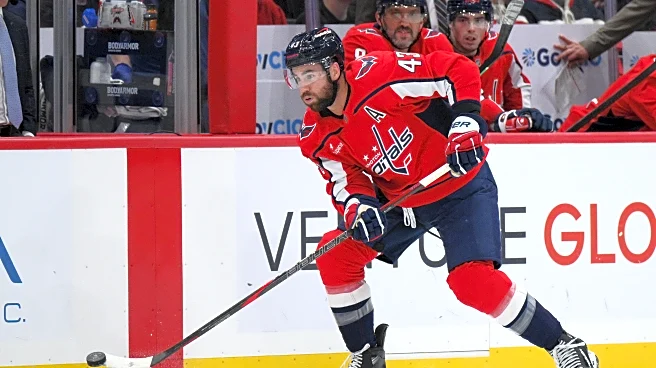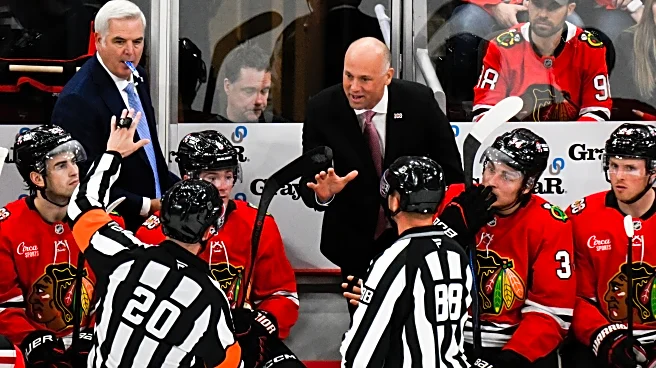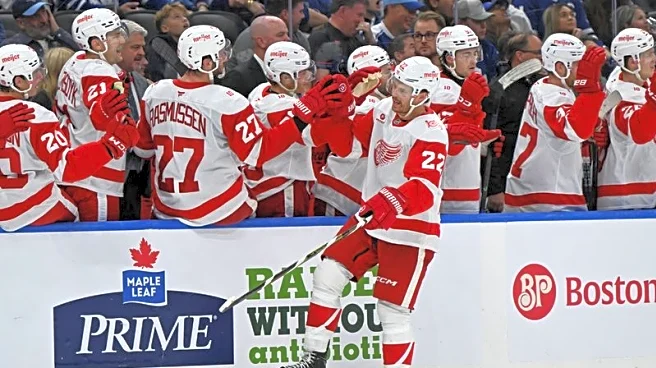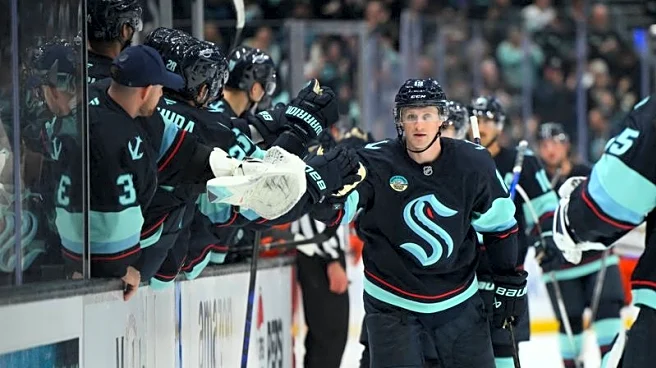What's Happening?
The Tampa Bay Lightning hockey team marked the beginning of their season with a series of events and changes. The team secured their first win against Boston in a matinee game, showcasing a mix of performances
over the first three games. A notable change this season is the NHL's new dress code, which allows players to wear contemporary fashion instead of traditional suits for game arrivals. This change has been embraced by players like Victor Hedman and Nikita Kucherov, who have opted for more casual attire. Additionally, the Lightning's pregame show, led by Paul Kennedy, Pat Maroon, and Braydon Coburn, was well-received, creating a lively atmosphere akin to a College GameDay event.
Why It's Important?
The introduction of a new dress code by the NHL represents a shift towards modernizing the league's image and allowing players more freedom in self-expression. This change could influence other sports leagues to reconsider traditional attire norms, potentially impacting the fashion industry associated with sports. The successful start of the Lightning's season, coupled with engaging pregame shows, helps boost fan engagement and attendance, which is crucial for the team's revenue and community support. The team's ability to adapt to new rules and maintain a strong performance can set a precedent for other teams in the league.
What's Next?
As the season progresses, the Lightning will continue to build on their early successes and adapt to the new dress code. The team's management and players may explore further opportunities for fan engagement and community involvement, leveraging the positive reception of their pregame shows. The NHL's decision to allow contemporary fashion could lead to collaborations with fashion brands, enhancing the league's visibility and appeal to younger audiences. The Lightning's performance in upcoming games will be closely watched as they aim to maintain their winning streak.
Beyond the Headlines
The change in dress code reflects broader cultural shifts towards individuality and self-expression in professional sports. This move could influence other leagues to adopt similar policies, potentially leading to a more diverse representation of athletes' personalities. The Lightning's approach to fan engagement through dynamic pregame shows highlights the importance of creating memorable experiences for fans, which can strengthen community ties and enhance the team's brand. These developments may contribute to long-term shifts in how sports teams interact with their audiences.














